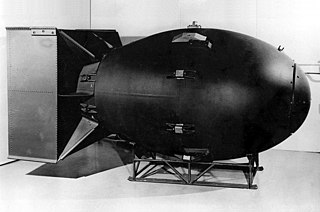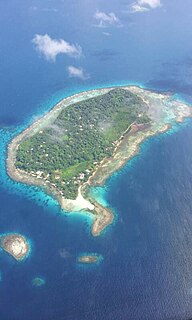
The Vorkosigan Saga is a series of science fiction novels and short stories set in a common fictional universe by American author Lois McMaster Bujold. The first of these was published in 1986 and the most recent in May 2018. Works in the series have received numerous awards and nominations, including five Hugo award wins including one for Best Series.

The Time Machine is a science fiction novella by H. G. Wells, published in 1895 and written as a frame narrative. The work is generally credited with the popularization of the concept of time travel by using a vehicle that allows an operator to travel purposely and selectively forwards or backwards in time. The term "time machine", coined by Wells, is now almost universally used to refer to such a vehicle.

Time Enough for Love is a science fiction novel by American writer Robert A. Heinlein, first published in 1973. The work was nominated for the Nebula Award for Best Novel in 1973 and both the Hugo and Locus Awards in 1974.

Apocalyptic and post-apocalyptic fiction is a subgenre of science fiction, science fantasy or horror in which the Earth's technological civilization is collapsing or has collapsed. The apocalypse event may be climatic, such as runaway climate change; natural, such as an impact event; man-made, such as nuclear holocaust or resource depletion; medical, such as a pandemic, whether natural or man-made; eschatological, such as the Last Judgment, Second Coming or Ragnarök; or imaginative, such as a zombie apocalypse, cybernetic revolt, technological singularity, dysgenics or alien invasion. The story may involve attempts to prevent an apocalypse event, deal with the impact and consequences of the event itself, or it may be post-apocalyptic, set after the event. The time frame may be immediately after the catastrophe, focusing on the travails or psychology of survivors, the way to maintain the human race alive and together as one, or considerably later, often including the theme that the existence of pre-catastrophe civilization has been forgotten. Post-apocalyptic stories often take place in a non-technological future world or a world where only scattered elements of society and technology remain.
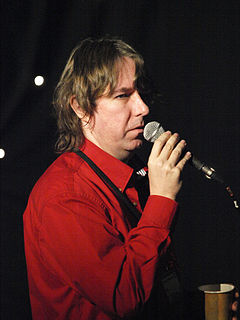
Alastair Preston Reynolds is a British science fiction author. He specialises in hard science fiction and space opera. He spent his early years in Cornwall, moved back to Wales before going to Newcastle University, where he read physics and astronomy. Afterwards, he earned a PhD from the University of St Andrews. In 1991, he moved to Noordwijk in the Netherlands where he met his wife Josette. There, he worked for the European Space Research and Technology Centre until 2004 when he left to pursue writing full-time. He returned to Wales in 2008 and lives near Cardiff.

The End of Eternity is a 1955 science fiction novel by American writer Isaac Asimov, with mystery and thriller elements on the subjects of time travel and social engineering. Its premise is that of a causal loop – a type of temporal paradox in which events and their causes form a loop.
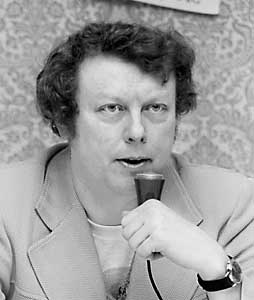
Gordon Rupert Dickson was a Canadian-American science fiction writer. He was inducted into the Science Fiction and Fantasy Hall of Fame in 2000.

The Hyperion Cantos is a series of science fiction novels by Dan Simmons. The title was originally used for the collection of the first pair of books in the series, Hyperion and The Fall of Hyperion, and later came to refer to the overall storyline, including Endymion, The Rise of Endymion, and a number of short stories. More narrowly, inside the fictional storyline, after the first volume, the Hyperion Cantos is an epic poem written by the character Martin Silenus covering in verse form the events of the first book.
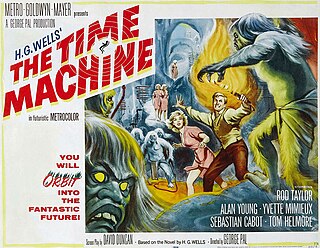
Time travel is a common theme in fiction and has been depicted in a variety of media, such as literature, television, film, and advertisements.
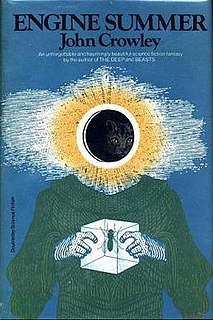
Engine Summer is a novel by American writer John Crowley, published in 1979 by Doubleday. It was nominated for the 1980 National Book Award for hardcover science fiction, as well as both the British Fantasy and John W. Campbell Awards the same year. It was rewritten from Crowley's unpublished first novel, Learning to Live With It. It has been illustrated by Gary Friedman (1979) and Anne Yvonne Gilbert (1983).
William Renald Barton III is an American science fiction writer. In addition to his standalone novels, he is also known for collaborations with Michael Capobianco. Many of their novels deal with themes such as the Cold War, space travel, and space opera.

Orion Shall Rise is a science fiction novel by American writer Poul Anderson, published in 1983. It is part of his Maurai series.

Journey Beyond Tomorrow, reprinted with the title Journey of Joenes, is a 1962 science fiction/satire novel by American writer Robert Sheckley, first published in The Magazine of Fantasy & Science Fiction in two parts October and November 1962, and the following month by Signet Books.

Time Travelers Never Die, written by Jack McDevitt, is a 2009 science fiction book about time travel and the consequences it can cause. The novel is a reworking of McDevitt's 1996 novella of the same title, which in 1997 was nominated for both a Hugo Award and a Nebula Award. McDevitt rewrote the story because he was inspired to work with time travel once again.
Quest for the Future is a science fiction novel by A. E. van Vogt. It was first published by Ace Books in 1970.
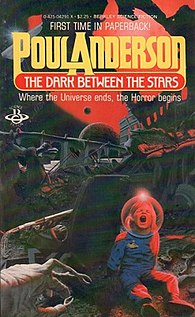
The Dark Between the Stars is a 1981 collection of previously-published science fiction short stories by American writer Poul Anderson.



